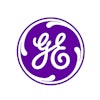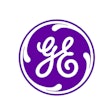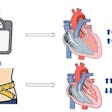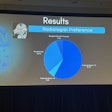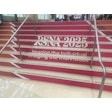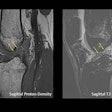
The Power of Landing Pages
What is a landing page?
A landing page or a lead capture page is the page that appears after someone clicks on your online ad. It’s the page that continues or completes the message that you started in the ad itself, and that’s a key reason why you should be using them. In fact, your landing page is just as important as the ad itself, because it can make or break the success of your online campaign.
Why use a landing page?
Landing pages are critical because they help you drive your message home and make it possible for people to take some action that is important to you.
Here are four key benefits landing pages provide:
- Continuity of branding and messaging
Have you ever clicked an ad and been taken to a page that looked so different you were not sure if you were in the right place? A good landing page creates visual and messaging continuity from the ad that readers clicked on. It reinforces your branding and let’s people know that they are in the right place.
- A reason to act
Most companies today are looking for ways to generate leads for their sales team. In order to do that, people have to be willing to give you their contact information, and that can be very challenging since the average reader is worried about how his or her information will be used.
To overcome these fears, you have to give people a reason to act -- you need to provide a compelling reason for them to give you their information. This can be offering them a promised benefit, helping them learn something, or providing them information they might find helpful. Some examples include an educational article, access to a resource or person, white paper, case study, or another offer.
The landing page is your space to frame that offer and give users a compelling reason to go on and take the action you are asking them to make.
- Sharpened focus
Ads and e-mail broadcasts that simply drop people on a company website’s home page almost always provide disappointing results because it distracts users from what you really want them to do -- which is take some kind of action.
By using a landing page, you can take readers to exactly where they need to go. You will eliminate the frustration that comes from them not finding what they were looking for, and you’ll lower the risk of them being distracted and forgetting why they came in the first place.
You can fine-tune the focus of the page itself by testing different variations of it. Some common elements to test include the page layout, the call to action, the incentive offered, and the length of the lead collection form and fields required. Sometimes even small changes in these elements can result in big gains in your conversion rate.
- Creative freedom
Generally speaking, trying to fit a great landing page into a corporate website template is tough because corporate sites strive for uniformity in presentation. Landing pages often carry over a unique look and feel from the original ad and make a highly focused offer. Lead collection pages that are forced into a typical corporate format often underperform for this reason.
A good landing page needs to have a clear focus that directs the user toward taking a specific action. Anything that distracts from that goal should be removed. To reach that goal, you need to have some creative latitude. You need to be able to carry over some of the graphics from the ad for continuity and focus on the marketing message versus just the product or company information. Landing pages provide a great way to accomplish this goal.
In short, landing pages are a critical but often overlooked component of a successful ad campaign. Landing pages provide you with a way to present a highly focused offer in a creative way to maximize your ad click-through and conversion rate.
In Part II of this article, we’ll look at the 7 Deadly Sins of Landing Page Design.


